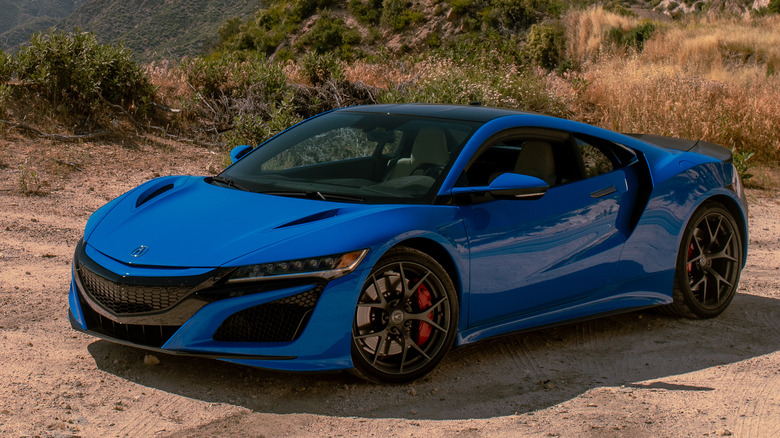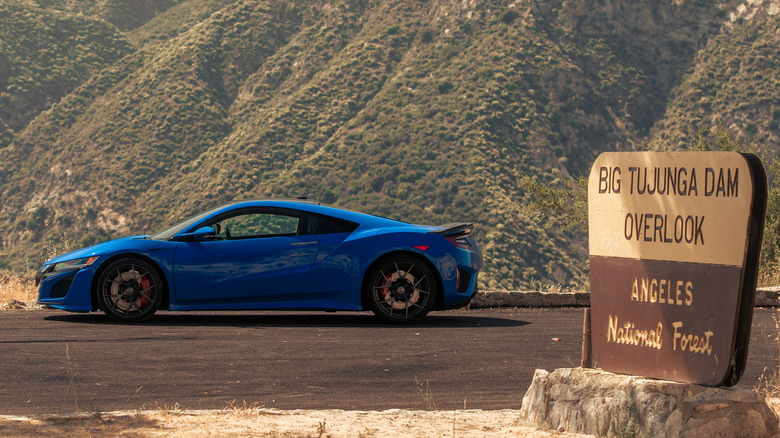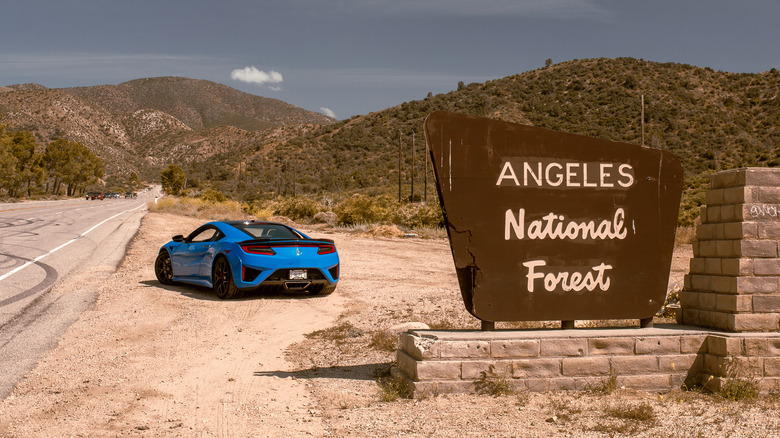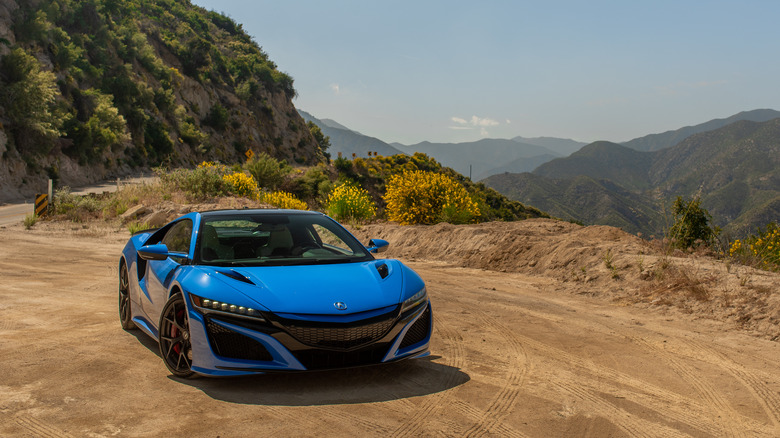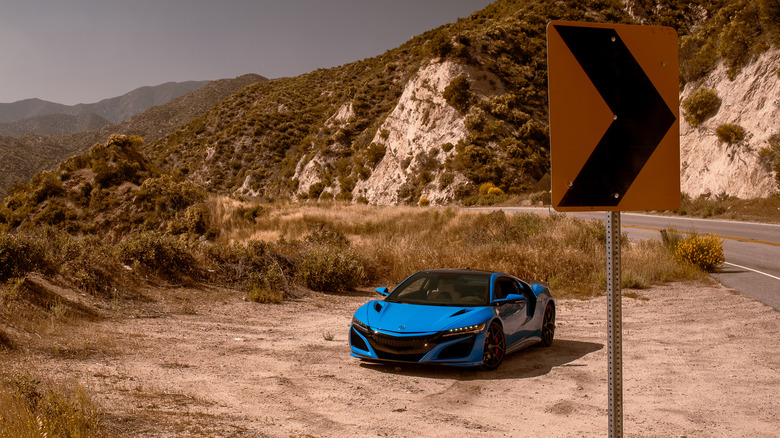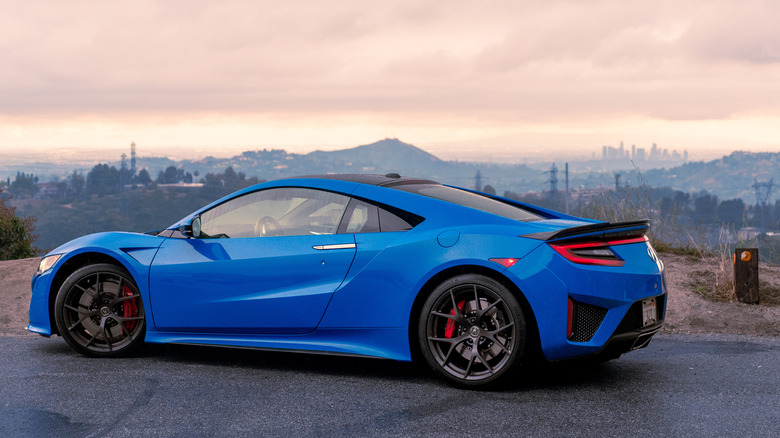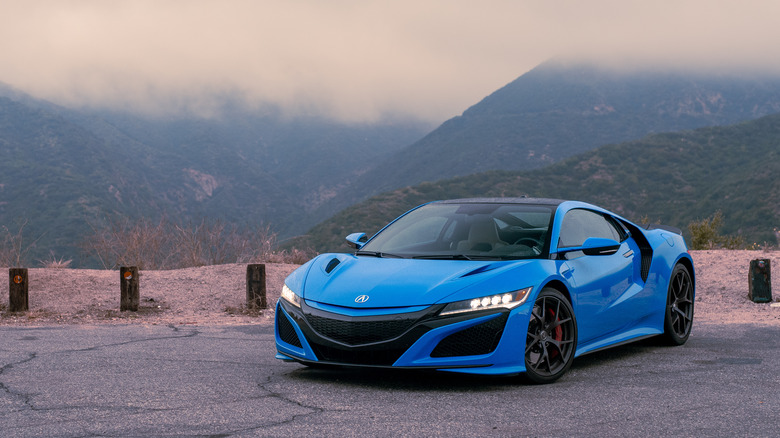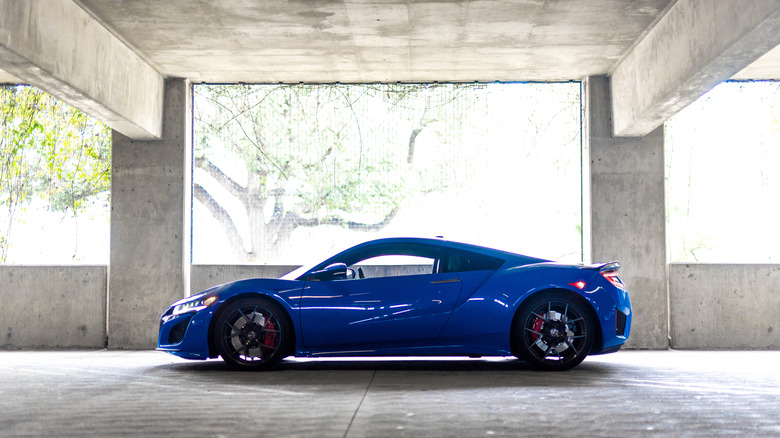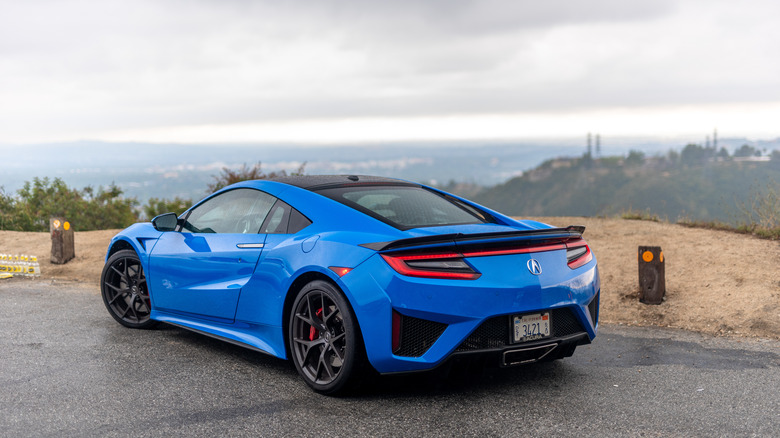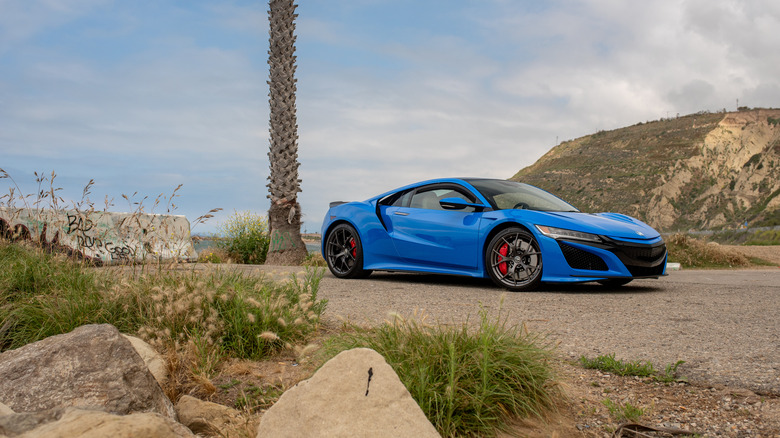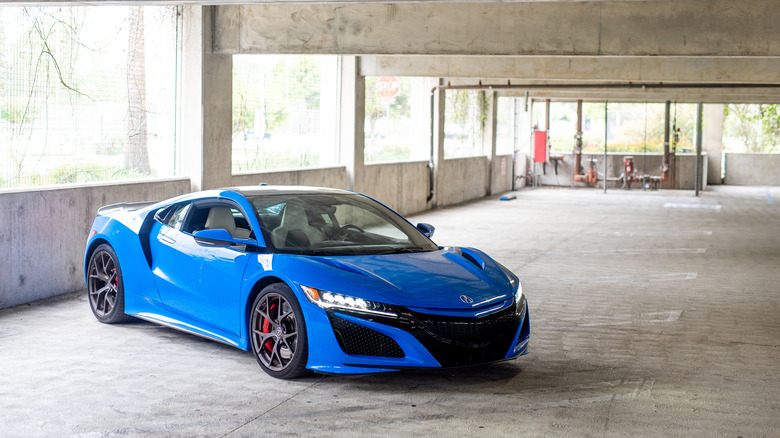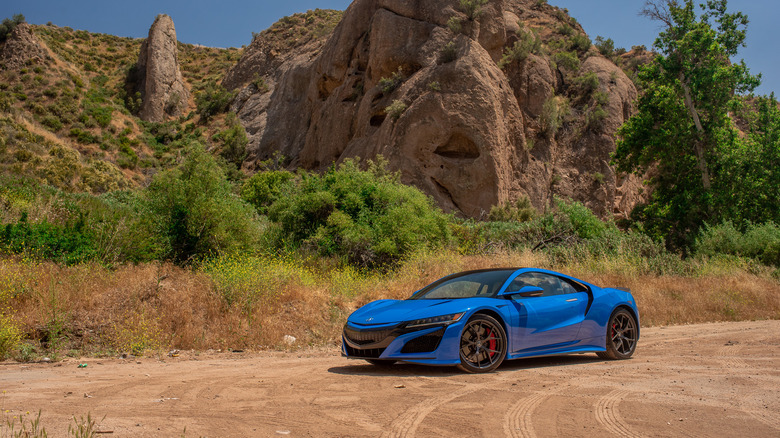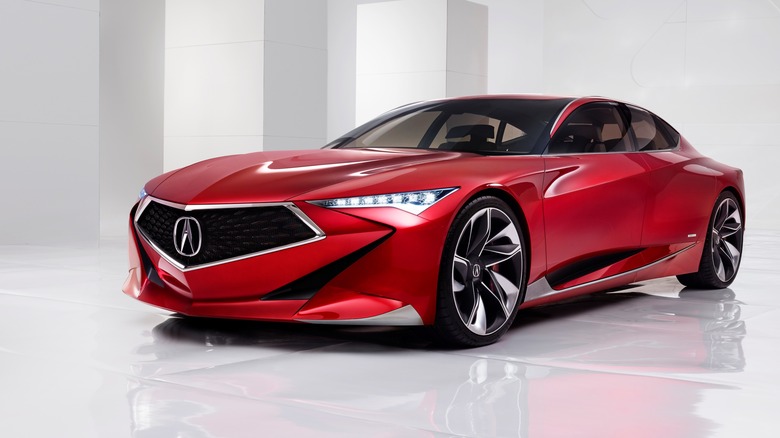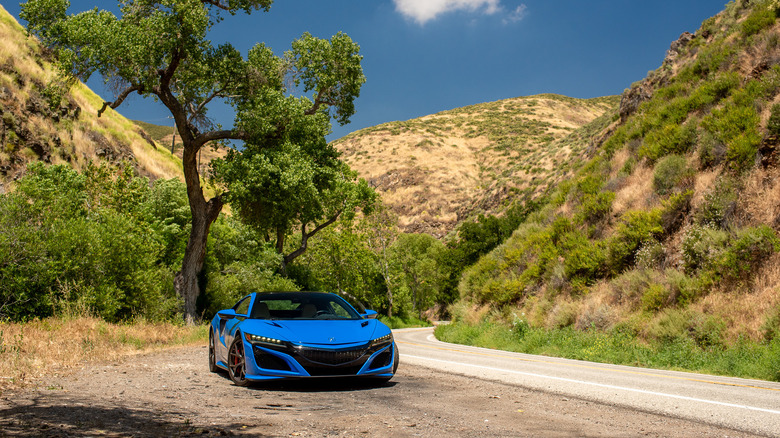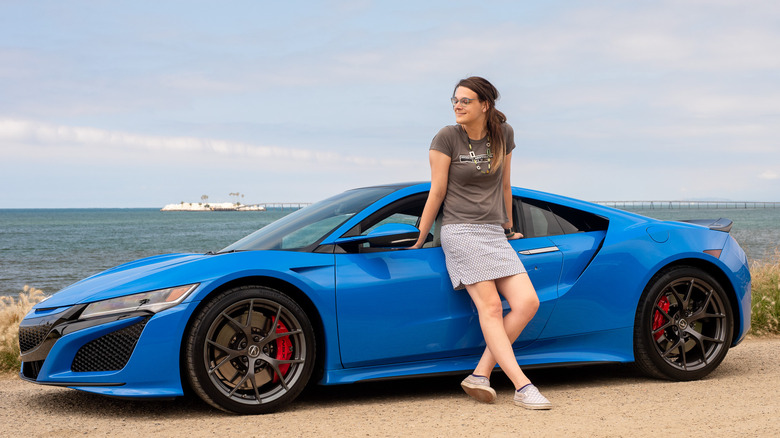Why (Almost) Everyone Was Wrong About The Acura NSX
The second-generation Acura NSX has had one of the most confusing impacts on the automotive zeitgeist of any car in decades. It blended the absolute freshest in hybrid technology (and computer-assisted high performance) with the livability of a Honda, in an attempt to put a modern spin on the classic Ferrari-beater first-generation NSX of the 90s—a car that had won universal praise.
The second-generation's modern high-tech drivetrain cocktail, however, led to uncertain reception at its release. The hybrid system is absurdly quick, but also resulted in a 3,800 pound curb weight and drive-by-wire technology for almost every machine-to-human interface. The NSX featured Porsche 918-level technology for a fifth of the price, but its performance still trailed gas contemporaries at the edge of the performance envelope. Some praised how easy it is to drive fast, others criticized it for the exact same reason.
The Legacy
Its legacy has only become muddier since it debuted in 2017; while the NSX wasn't a complete flop, it only sold 2,900 examples over its six-year lifespan—roughly half the 800 per year that Acura was prepared to hand-build for customers. The NSX is now gone—all 350 of the final-run Type S models have been sold—but Acura handed me the keys to a '21 model to use as, essentially, a daily-driver for a weekend. I decided to evaluate what the NSX's cultural impact truly was, and what we will remember it for.
The San Gabriel Mountains
I'd spent a total of six minutes in an NSX in my life before, when I drove the final-run Type S for a few hot laps around Daytona. I found it mind-meltingly fast, but I didn't quite have the time to let much else sink in. This time I had a long weekend in Los Angeles with a bright Long Beach Blue '21 model, and I could drive for as long as I could afford the premium for its tank. I was determined to find out the truth about the NSX.
The Angeles National Forest
Of course, I'm 27 years old and I daily-drive a 1989 Toyota Camry; before I could discover the truth, I had personal needs to fulfill. When Acura handed me its 573-horsepower supercar and told me to go nuts, I obliged and went nuts. The first thing I did was aim it at the twistiest stretches of road I could find in a 100-mile radius. I'm pretty conservative with most cars I don't own, so I started off slow and cautious, but it took all of ten miles—and seven minutes—for me to warm up to the Acura. By the end of the hour I was absolutely tearing through the San Gabriel Mountains like I had a grudge against the Pacific Tectonic Plate itself.
I discovered on the Crest that my initial impression of the Type S back at Daytona a few years back was correct: the NSX is unreasonably fast. On paper, this is thanks to its trio of electric motors—two in front, one in back—and its twin-turbocharged 3.5-liter V6, which combine to put 573 horsepower to the pavement. But the NSX was more than merely fast; it inspired heroic—or idiotic—driving I usually shy away from. As I wound my way through desolate two-lane roads pushing harder than I'd ever dreamed I would in a supercar, I began to realize why it was so obscenely fast, and why I drove it so hard.
High-Tech vs. Pants-Seat
In a normal mid-engined car, braking late—balancing all of the car's weight over the front axle, and then pitching it into a corner—is a recipe for disaster. In the NSX, there is, as far as I could tell, no penalty for doing so. The 305-millimeter tires out back and the deft drive-by-wire blend of six-pot Brembos and regenerative hybrid braking meant that I more or less used the brake pedal whenever I wanted to without penalty, like I was in a Need for Speed game with all of the assists on.
Anything But Normal
In a normal all-wheel-drive car, meanwhile, accelerating too early can lead to understeer that pushes you off your line (and across the double yellow). In the NSX, however, because the front axle has two separate electric motors that can individually add power, understeer is a non-issue. Throttling well before the apex is actually the proper way to pilot this car, because the motors will add instant torque to your steering inputs that yaw the front end positively. In other words, gas it early, and the front motors will yank the NSX through the corner effortlessly.
Even downshifting is a painless proposition, because the rear electric motor blips to life while the transmission changes gears so there's no loss of torque to unsettle the car. Steering is precise and adds weight progressively with greater input, making it easy to add mid-corner adjustments to your line. The A-pillars are specifically designed for good sight lines, so I could actually see where I was headed.
Usain Bolt In Sweatpants
I got the tires to make noise once, in Angeles National Forest, when I pushed the nose into a little understeer after cooking the front rubber for four straight hours of "spirited" driving. Otherwise, I never heard a single complaint from the NSX; no oversteer, no understeer, no skittering over uneven pavement, no light steering during acceleration.
It is truly the easiest car to drive fast I've ever experienced.
If this makes it sound boring, as some contemporary NSX reviews claimed when it launched, then I don't understand what people consider fun. Getting to drive fast-car-fast without worrying about turning Acura's supercar into a cerulean smear on a canyon wall had me beaming. Sure, maybe a skilled pilot could wring a little more speed out of a 911 Turbo, but I sure as hell couldn't (and I'm willing to bet most of the automotive journalists who complained about the accessibility of the NSX couldn't, either). The NSX is Usain Bolt in sweatpants: absurdly casual about being ungodly fast.
Traffic On The 101
And then as Angeles Crest Road faded into my rearview mirror, Los Angeles and the bumper-to-bumper traffic of the 101 and street-parking a car that costs more than I make in half a decade beckoned through the windshield, and I actually found out that the performance is not why this car will be ensconced as a masterpiece.
The first, and arguably most important reason, is that it's actually comfortable to drive the NSX in traffic. Clicking the drive-mode dial out of "Sport+" back to "Sport" or "Quiet" makes the suspension unclench and the throttle relax and the steering lighten. Then, it drives a lot like any other Acura: comfortable, but with very little hint of the deathly-precise drivetrain I was tearing through the canyons with an hour before. The seating position is comfortable. The stereo sounds great. My carry-on suitcase and industrial-sized backpack full of camera equipment stowed neatly into the trunk. I'd daily-drive this car in a heartbeat.
Super Livable
The NSX feels like it was too far ahead of the curve; if this had been on the market at the same time as the current crop of hyper-SUVs like the Purosangue, DBX, and Urus, it would have been welcomed as a low-slung breath of fresh air for the everyday high-performance market. It offers all the livability of modern super-utility-vehicles (minus, of course, rear seats—DINKs only) without sacrificing the sex appeal or driving joy of being, you know, an actual supercar.
Has Not Aged A Day
But more importantly to a young trans woman with everything to prove, I drove through Hollywood and Cheviot Hills and Malibu as I traipsed around Los Angeles—neighborhoods where G-Wagens are more common than Camrys—and the NSX still turned heads gracefully. It does not beg to be looked at, and yet everyone still looks.
Los Angeles is a city where effortless attention is the primary currency, and the NSX made me a millionaire for a weekend
The design has aged wonderfully. The McLaren 570S and 720S of the same era had a stylistic shelf life of roughly a week. The BMW i8, the only other contemporary hybrid sports car with a similar price tag, confrontationally begged passers-by for attention with its overwrought two-tone styling and gullwing doors. Lamborghini models since the debut of the Gallardo possess a level of aggressive masculinity I'm not comfortable with being seen in.
Against this backdrop, the NSX looks even better. Its design feels like it could have come out this year, and it didn't make me feel like I needed to refill my prescription for testosterone-blockers when I drove down Sunset Boulevard. It is truly stunning, and I'm not the only one that thought so; when I street-parked it to grab coffee, I watched people walk past hundreds of thousands of dollars of exotics to snap photos of my bright-blue Acura.
How Did It Age So Well?
I couldn't put my finger on what made it so ageless—or attract so much attention after over half a decade on the market—so when I finally returned the supercar to Acura after my weekend in Los Angeles, I called Michelle Christensen, the lead designer of the NSX. I wanted to know what she had in mind when she penned the silhouette and how it still looked fresh seven years later.
Boil It Down To Its Essence
Michelle explained to me that her strategy was not to add a single cue that did not serve a purpose: "Every single surface on the car contributes to the performance... everywhere something lifts from the surface, you have a functional element." There was no allowance for stylistic adornment that led to worse wind-tunnel results or reduced performance.
"Anything that is a fake vent—that's a pet peeve," she told me. "It needs to function, or get rid of it... Boil it down to its essence."
A retro-style "throwback" design was off the table before a pen even touched paper, too. Michelle explained that wouldn't be true to the spirit of the original NSX, and the only homage directly included in the second-generation car were small nods like the black roof canopy (and excellent sight lines for the driver).
Acura Precision
This helps explain why the NSX isn't embarrassing to be seen in and didn't seem to fall into the high-T trap of mid-teens supercar design, but it isn't the complete story. Michelle explained that another crucial component of the NSX's design was that it was to be the halo-car reset for Acura's entire design language. The cues imbued in the $160,000 supercar would need to be integrated into base-model SUVs; easily-recognizable, bold styling was key.
After finishing the NSX design, Michelle penned the Acura Precision Concept, a design-language model that helped bridge the gap from the NSX to the rest of the lineup. Although Michelle has since moved on to Karma Automotive, her stylistic influence in newly-redesigned iterations of the TLX and Integra are undeniable when looking at the Precision Concept. The NSX was the blueprint for an entire generation of Acura cars, and it shows.
The Democratization Of Aerodynamics
As for why it's aged so well? We spent "hours and hours... in the wind tunnel," Michelle explains. With the EV craze that swept the industry since the NSX's debut, "range is directly impacted by aero. More mainstream mass-market cars now have to have supercar aerodynamics for range," she says.
The NSX was exotic at its debut; now, the technology that made it a standout machine is virtually commonplace. Since science dictated its design—and the rest of the market was forced to catch up—it simply looks like it was ahead of the curve of all of the hottest cars of the past five years.
Stylistic, Performance, and Daily-Drivable Masterpiece
So what did I learn about the legacy of the NSX with a long weekend in it? To answer that, we have to discuss how auto journalists evaluate cars. If you seek to be a superhero at the ragged edge of control like the Stig on a hotlap, if styling is simply a measure of how many angles you can throw at a machine, if daily-drivability is for the weak, then the NSX was assuredly a failure. It's simply too accessible. How will you convince yourself, the Macho Auto Writer, protégé of Jeremy Clarkson, that you're special, if this car makes it so straightforward for anyone to step into and feel like a hero?
If you drive the NSX like you would any other car in any other segment, then it's a masterpiece. It's easy to drive fast. It's easy to drive period, thanks to its electronic interfaces that transform it from a Porsche-eating supercar into a two-door TLX for city cruising. It's supremely comfortable, following in the mold of its first-generation predecessor. It's one of the most drop-dead gorgeous modern cars I've ever tested, and six years after it was introduced it still looks brand-new.
I had a good time in it, even if it didn't challenge my abilities, and because it didn't make me feel more like a "man". We're going to miss this machine, and I hope that whatever supercar comes next from Acura—whether it's a full EV or a return to classic combustion—I can feel this competent, this confident, in a car again. To the supercar shoppers out there reading? My only advice is not to miss out next time around.
